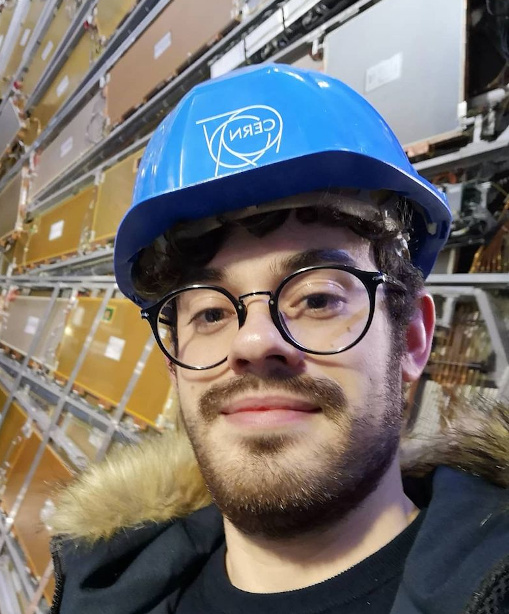Nicola de Biase

DESY
Notkestraße 85 (Building 1c)
22607 Hamburg
Room: 1c/O2.310
A Search for Additional Heavy Higgs Bosons Decaying to Top Quarks in the Full LHC Run-2 Dataset
Supervisors: Dr. Katharina Behr (UHH), Prof. Peter Schleper (UHH), Prof. Kerstin Tackmann (DESY/UHH)
Nicola attended the University of Naples “Federico II” for his Bachelor's and Master’s degree in physics. He majored in particle physics, with particular attention on data analysis developing an interest in machine learning. For his Master thesis, he worked on a search for physics beyond the Standard Model (SM) of particle physics in the ATLAS experiment at LHC. The analysis focused on the search for a new bosonic resonance Y, decaying into a Higgs boson and a new boson X, with a completely hadronic 𝑋𝐻 → 𝑞𝑞%!𝑏𝑏% final state. Working on his Master thesis, he mainly focused on event reconstruction and signalbackground classification, also making use of machine learning algorithms such as parametrized Deep Neural Networks.
Nicola is currently a member of the ATLAS group at DESY. His main PhD project focuses on the search for additional Heavy Higgs bosons, decaying to a pair of top quarks in the ATLAS experiment. These new scalar or pseudoscalar states are predicted by a class of models in which the Higgs sector is extended to include a second Higgs doublet. Their decay in two top-quarks would interfere strongly with top-antitop quark production via SM processes, producing a specific peak-dip structure, and therefore cannot be identified easily with traditional analysis techniques. He will work on the development of new analysis tools such as novel reconstruction and identification approaches for semi-boosted top quarks, to improve the sensitivity to narrow interference patterns and to Heavy Higgs bosons with masses above 600 GeV, a mass region completely unexplored to date.
An additional technical PhD project aims at improving reconstruction of charged particle trajectories in the high-intensity collisions during the upcoming LHC Run-3 and the High-Luminosity LHC from 2026. Particular attention will be placed on the challenges posed by the dense hadronic environment in ATLAS. In such environment, charge clusters in the detectors can merge, and a classification needs to be made between single-particle and multi-particle clusters. The effects of radiation damage and tuning on the detector will be taken into consideration and advanced analysis techniques such as Deep Neural Networks and Mixed Density networks will be explored.